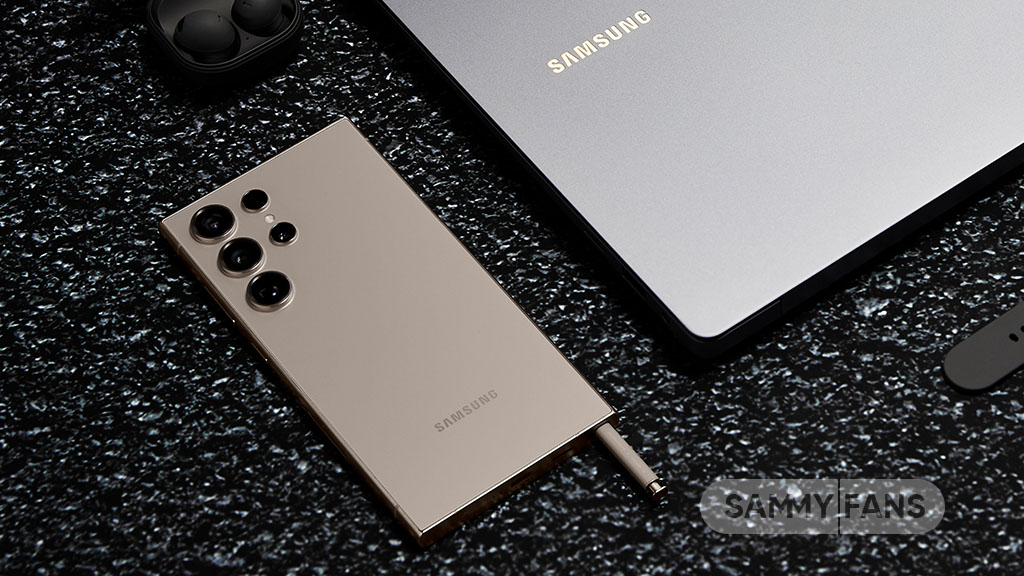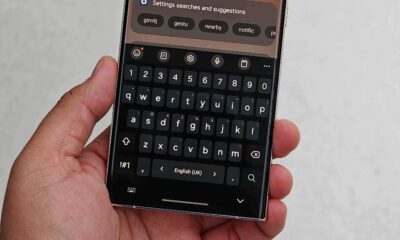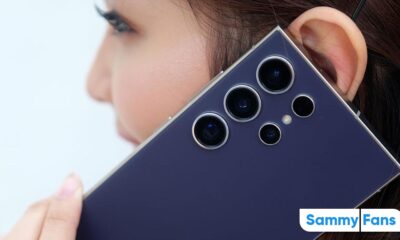Opinion
Here’s why I am waiting for Samsung Galaxy S25 Ultra

Just like every year, Samsung is set to unveil its trio of flagship smartphones at the beginning of next year: the Samsung Galaxy S25, S25+, and S25 Ultra.
Out of the new smartphones coming out, I really want the biggest and best one, the Galaxy S25 Ultra. Let me tell you why I’m so excited about it.
Disclaimer
Before we dive in, let’s clarify that the device has not yet been released, and the company has not officially confirmed its specifications or the name. The information I used in this article is based on previous release plans, as well as leaks and rumors from reliable sources.
Here’s why I am waiting for the Samsung Galaxy S25 Ultra:
1. Design and Display:
The Galaxy S25 Ultra is rumored to be the thinnest Ultra device yet, with a significant reduction in thickness compared to previous models. The device is expected to feature more rounded corners, which not only could look more modern but might also feel better in your hand.
It’s expected to have a screen size slightly larger than its predecessor, a 6.9-inch flat display. The use of ultra-thin symmetrical bezels would maximize the screen-to-body ratio, enhancing the viewing experience.
Disappointingly, Samsung has opted for M13-generation OLED materials for the Galaxy S25 Ultra’s display, instead of the more advanced M14 technology, as confirmed by DSCC CEO Ross Young through discussions with Samsung’s suppliers. Despite Samsung Display producing M14 OLED panels for products like the iPhone 16 Pro and Pro Max, the Samsung MX division will not utilize this technology in the S25 Ultra, prioritizing cost reduction.
2. Camera Upgrades:
The S25 Ultra is likely to feature an advanced AI camera system, possibly including a high-resolution sensor like a 200MP camera. An upgrade in the ultra-wide camera to 50MP with new specifications could significantly improve low-light performance and detail capture. There will be 50MP telephoto cameras for the 5x and 3x optical zoom.
The front-facing camera is expected to remain at 12MP, consistent with previous models, focusing on quality rather than a resolution increase.

3. Performance and Battery Life:
The flagship is expected to be powered by the Snapdragon 8 Gen 4 chipset, the phone would likely offer top-tier performance, possibly with efficiency gains due to the 3nm process technology, leading to better battery life and thermal management.
Although exact capacities weren’t mentioned, the combination of a new, more efficient processor and potentially a larger battery could mean exceptional battery life. It is expected to add a 5000mAh battery similar to the S24 Ultra.
4. One UI 7:
The new iteration of Samsung’s custom software, One UI, might include more refined Galaxy AI features for an enhanced user experience. As confirmed officially, the next version of One UI will bring major design changes and new features. The OS will be more smooth than ever before.
Getting the Galaxy S25 Ultra means you’ll enjoy the latest Android and One UI updates for years, thanks to Samsung’s pledge of up to 7 major OS updates.

Considering the Galaxy S25 Ultra might be worth it if you’re after Samsung’s top-tier design, camera advancements, performance enhancements, and battery efficiency. Keep in mind, though, that these insights stem from leaks and rumors, and the final product could have different specs.
Opinion
[Opinion] Samsung’s AI-powered Sketch to Image feature needs better marketing

Galaxy AI’s Sketch to Image is in urgent need of better marketing. Samsung is best at innovation and feature creation but its marketing strategy lags. It should learn to promote even tiny changes as ground-breaking innovations from Apple.
Since the launch, we have not seen Samsung aggressively marketing the Sketch to Image feature. Galaxy users are using it on a large scale, but the epic experience is available on S Pen-supported Galaxy models.
We all take a lot of photos on holiday with friends, but there’s always one that stands out as the pick of the bunch. Sometimes, you might want to add a personal twist to it, like adding a crown to the head of the birthday girl.
You require additional tasks such as an image editor to get things done. You can easily put vector stuff on images or use a PNG file from the web. However, the image doesn’t render realistic as professional editing needs time and hard work.
Samsung Galaxy AI’s Sketch to Image is here to help with that.
You can start with a quick and simple sketch of what you want to see on a photo you’ve taken. Within a few seconds, the sketch will be converted into a photorealistic object that matches the mood of the photo — all thanks to AI.

One UI 6.1.1’s Sketch to Image feature allows you to turn your rough sketches into stunning works of art. You can either layer them on top of an image or start with a blank canvas and create something beautiful from scratch.
That’s not it, the feature is packed with additional options to customize your creations by selecting from different styles, such as watercolor or 3D cartoon. You can activate Samsung’s Sketch to Image in Gallery, Edge Panel, and Samsung Notes.
Opinion
Samsung should’ve teased Special Edition during Galaxy Z Fold 6 launch

Samsung is preparing to launch a slimmer and better version of the Galaxy Z Fold 6 as Special Edition. The company’s approach to counter Chinese competition is a welcome move, but isn’t it indirectly cheating Galaxy fans?
Here’s why I think this way:
Samsung has been the biggest seller of foldables internationally. In the past two years, the company realized the intensively increasing competition from Chinese vendors. It also reportedly reverse-engineered last year’s Huawei foldable.
Rumors suggest dreamy upgrades in Samsung’s next foldable phone. Compared to the Z Fold 6, the Special Edition would present extraordinary upgrades. The segments of upgrades could include display, camera, and design.
The Special Edition of the Galaxy Z Fold 6 will be slimmer than the standard Z Fold 6. Samsung has reportedly ditched digitizer to reduce the thickness. However, the S Pen is still supported – suggesting a new display tech has evolved.
Galaxy Z Fold SE measures 10.6mm thick when folded and 4.9mm thick when unfolded. As compared to the Standard Fold 6, the cover and inner screens could also be slightly larger; measuring 6.5-inch and 8-inch, respectively.
The Fold 6 SE could have an edge over Fold 6 in terms of design and display. However, the camera department is also said to indulge in an epic upgrade. Rumors say the S24 Ultra’s 200MP camera could be installed in the Special Edition foldable.
It’s going to be a flagship Samsung smartphone, so the processor could be the same as the Z Fold 6. The backplate design could also be slightly different and a bit fancy. These upgrades have been demanded by Samsung fans for years.
But the way Samsung’s bringing is not good, honestly.
Galaxy Z Fold 6 was launched alongside the Z Flip 6 in July this year. The consumers who’ve bought the Z Fold 6 could find themselves cheated after the Special Edition’s debut. If it was in development, a teaser should’ve been displayed at the last Unpacked.
Opinion
Why I will skip the first One UI 7.0 beta on my Galaxy S24 Ultra

When Samsung releases One UI 7.0 beta, the Galaxy S24 users will be very excited to try out the new features and improvements. However, despite my serious excitement to try the cutting-edge features, I’ve decided to skip installing the first beta release of One UI 7.0 on my Galaxy S24 Ultra. Instead, I will go for the 2nd One UI 7.0 beta build.
This decision isn’t made lightly but is based on past experiences with early betas, insights from tech communities, and an understanding of what beta testing involves. Here’s why I’m choosing to wait rather than dive into the first wave of this new One UI version.
Here are some reasons you might decide before installing the first One UI 7.0 beta on your Galaxy S24 Ultra:
1. Stability Issues: Beta versions often come with bugs and stability issues. Since this would be the first beta, it might have more common problems that could affect daily usage, like app crashes, battery drain, or even critical features not working properly. From my experience, the initial betas are not optimized for battery life, potentially leading to worse battery performance than what you’re used to with a stable version.
2. App Compatibility: There’s a high chance that some apps might not be optimized for One UI 7.0 yet. This could lead to apps not functioning correctly or at all, which could be particularly frustrating if these are apps you rely on for work or personal use. As we have seen in the past, some beta versions might have issues with payment and banking apps due to changes in APIs or security certificates, which could be a significant inconvenience.
3. Performance: Beta software can cause unpredictable performance. There might be slowdowns, UI lag, or unexpected reboots, which could hamper the user experience.
4. Availability: Beta programs often roll out in phases and might not be available for all regions or carrier-specific models at once. The first beta might not include all the features slated for the final release, or some features might not work as intended. Waiting for a later beta or the final release ensures you get a better experience.
5. Serious Issues: Once you install a beta, rolling back to a stable version might require a full wipe of your device, which means backing up data, reinstalling apps, and setting up your phone again, which is time-consuming. Although rare, there’s always a risk with beta software that you could encounter a bug that might lead to data loss. Sometimes, participating in beta programs can complicate receiving future OTA updates.

Here are some reasons why you might decide to install the 2nd One UI 7.0 beta instead of the first on your Galaxy S24 Ultra:
1. Improved Stability and Features: The second beta typically addresses many of the major bugs and stability issues found in the first beta. The second beta could introduce more features or refine those that were introduced in the first beta, providing a better experience.
2. Improved Performance: With feedback from the first wave of beta testers, Samsung likely optimize performance further. This could mean smoother animations, better battery life, and overall improved system performance in the second beta. Samsung might implement changes based on user feedback from the first beta.
3. Reduced Risk of Major Bugs: In the second beta, many of those critical issues would typically be resolved. Developers and Samsung have more time to ensure that popular apps work well with the new update by the time the 2nd beta rolls out. If there are any security vulnerabilities discovered in the first beta, they’re more likely to be patched in the second build.
4. Opinions: By waiting for the 2nd beta, you get to read reviews, watch videos, and see discussions about the first beta’s pros and cons, giving you a clearer picture of what to expect.

Going for the second beta could offer you a more refined and stable version of One UI 7.0, with less risk of encountering disruptive bugs or missing features that might be critical for daily use. However, remember that participating in any beta program still carries some inherent risks, like potential data loss or unexpected behavior, but the second iteration is generally safer than the first.
The promise of new features is appealing, but the likelihood of encountering bugs, incomplete functionality, and performance issues suggests a more cautious approach. By waiting for the subsequent beta version or the official release, I opt for a more stable, refined, and fully featured user experience, ensuring that my device continues to serve as a reliable tool for both work and play. I am excited for the One UI 7.0 beta program but my decision to skip the first One UI 7.0 beta on my Galaxy S24 Ultra stands firm. What are your thoughts on this?












